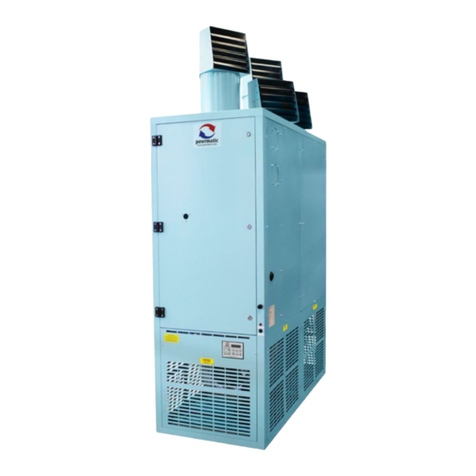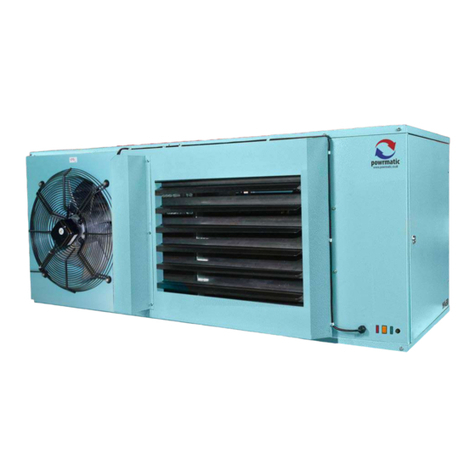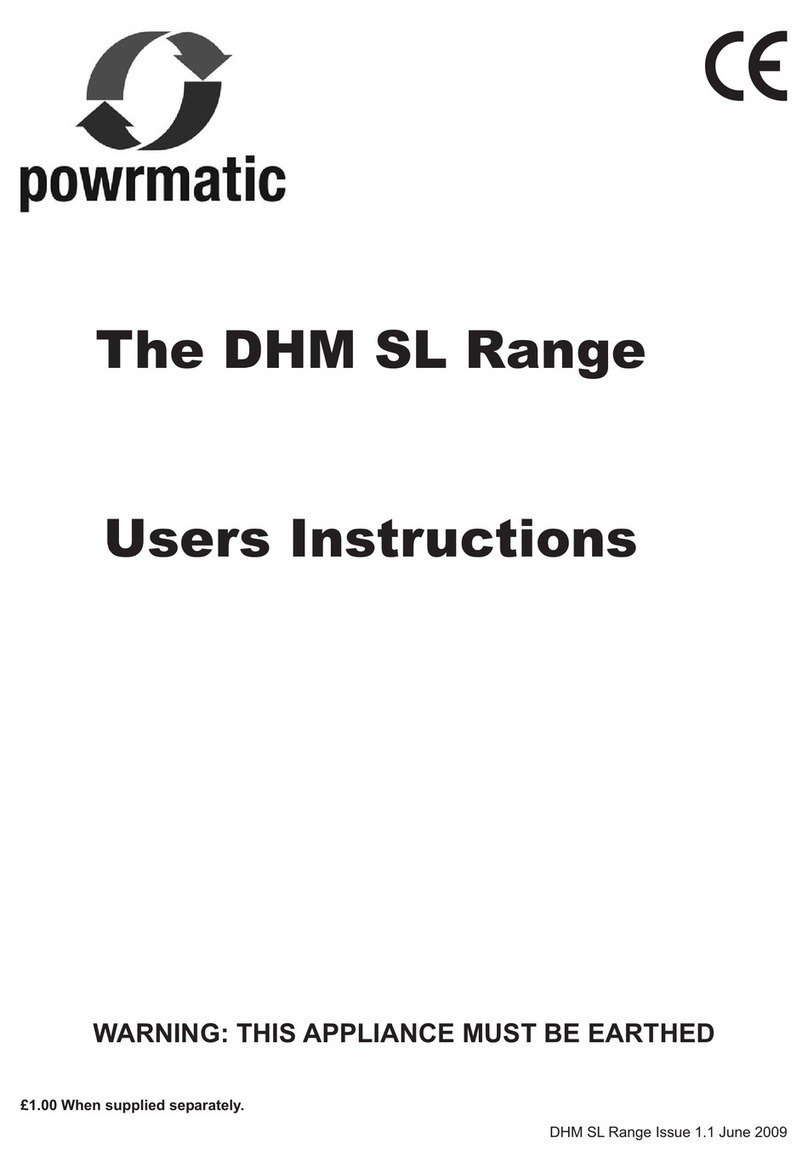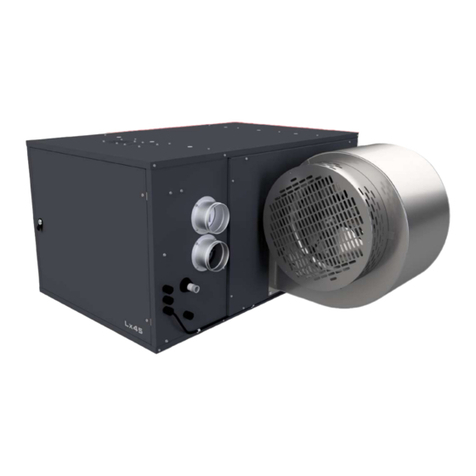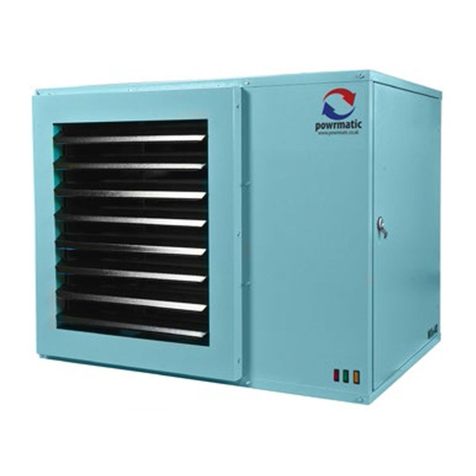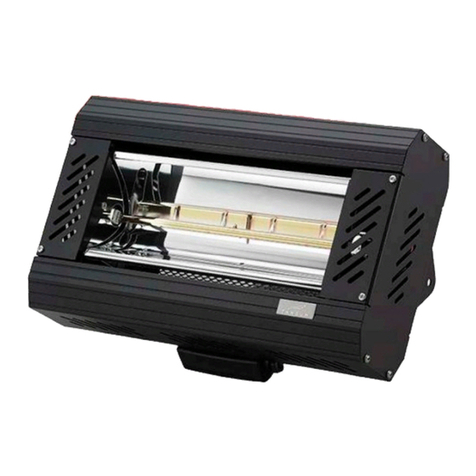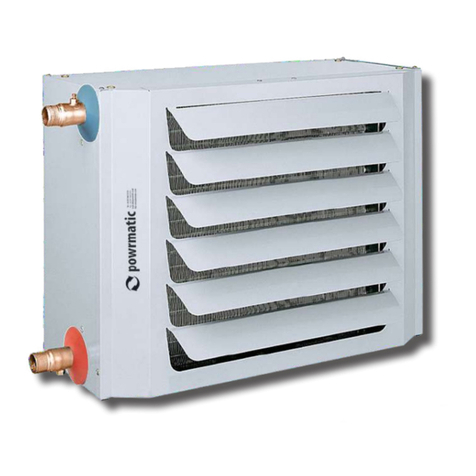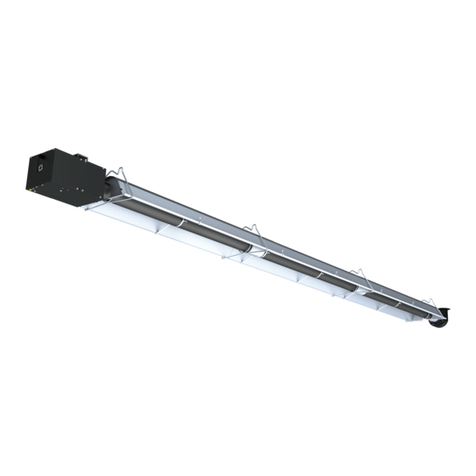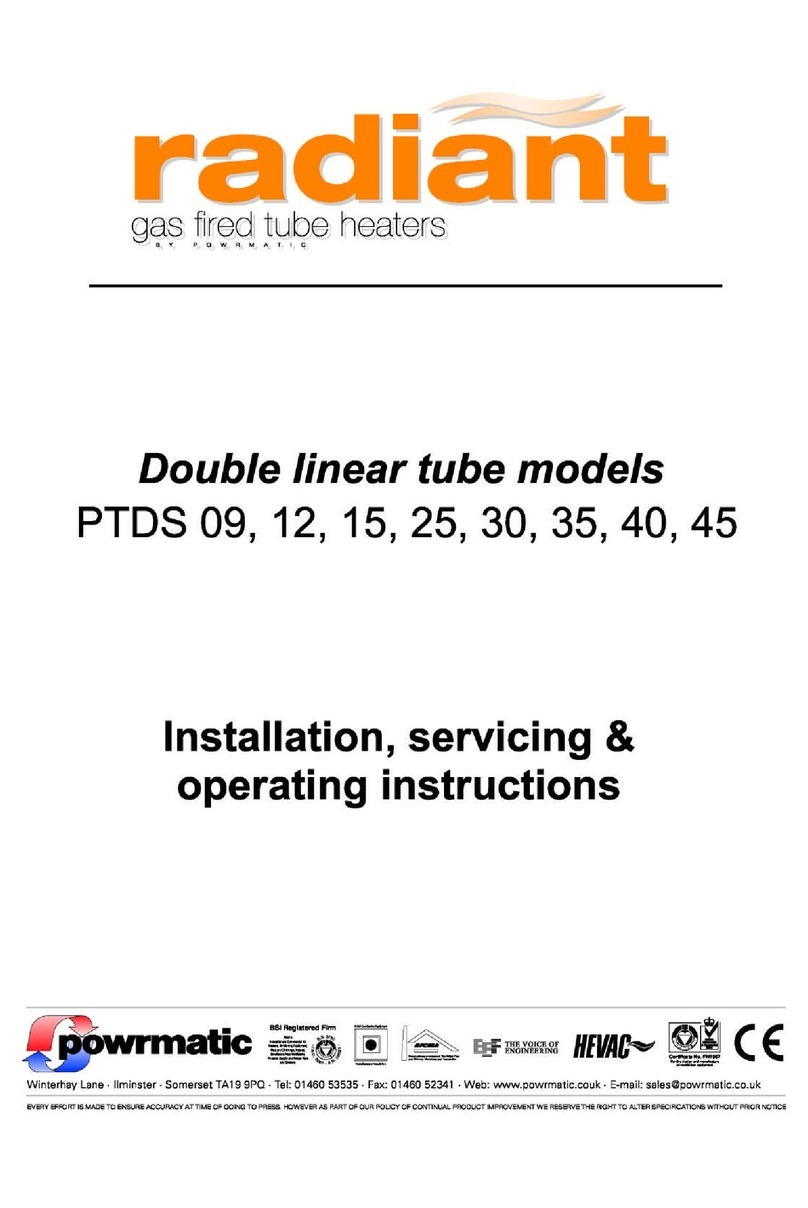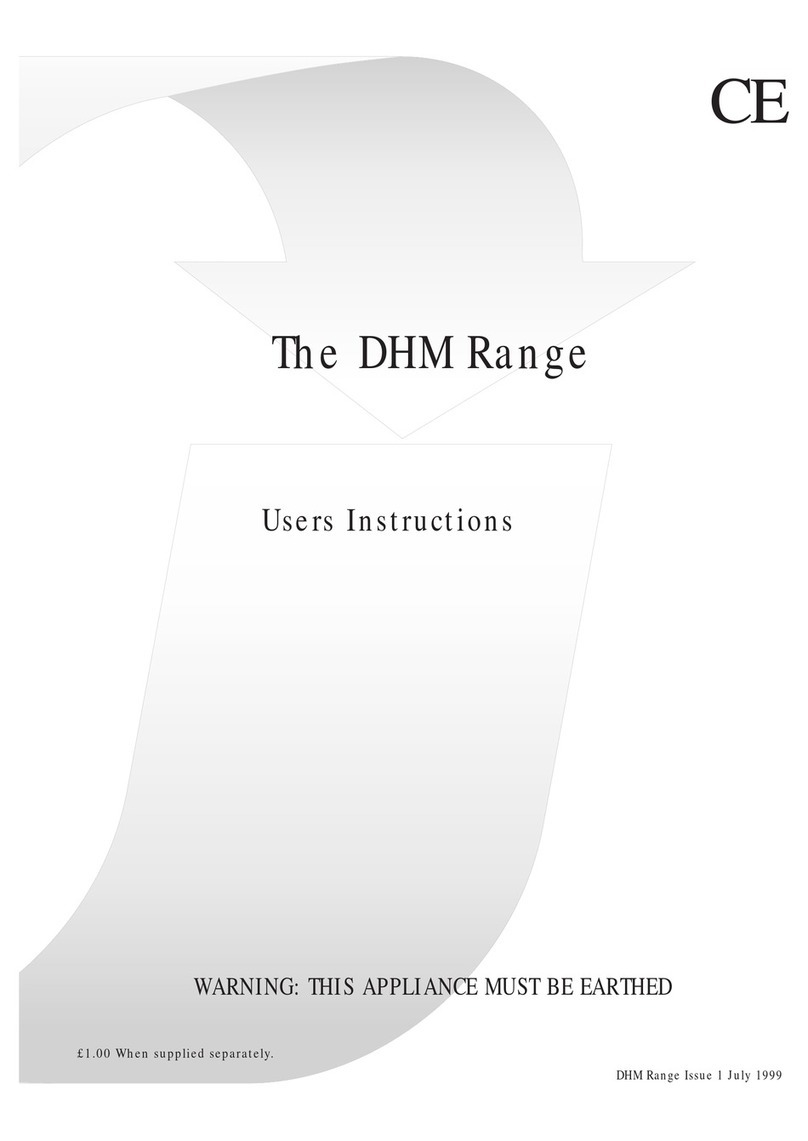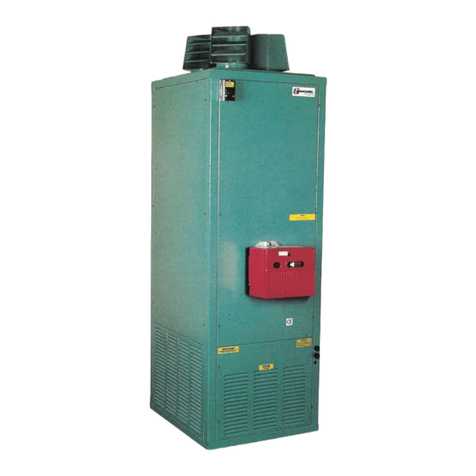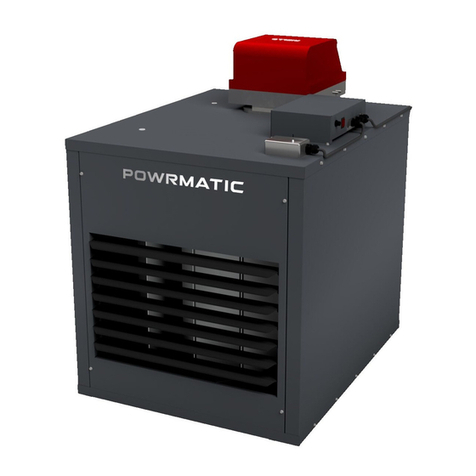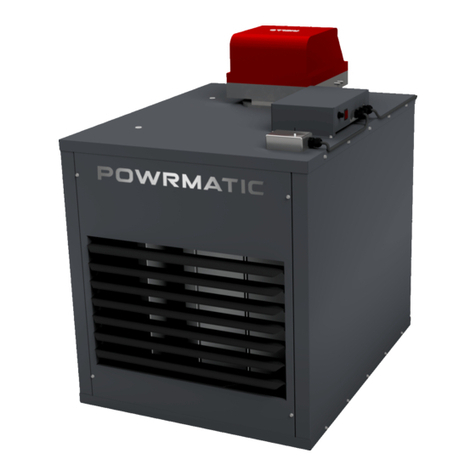Page 4 OUH Range Users, Instrucons & Service Instrucons Issue 5.1 September 2015
A) Checks before lighting the Air
Heater
The following preliminary checks should be made before
lighting the heater(s)
a) Ensure that the ELECTRICAL supply to the heater is
switched OFF.
b) Check that all warm air delivery outlets are open.
c) Check that the thermostat is set at MAX.
d) Check that the clock control is set to an ON period.
e) Check that any other controls are calling for heat.
f) Ensure that the Summer/Winter switch is in the Winter
position.
g) Check that the overheat reset button has not operated.
B) Lighting the Air Heater
NOTE: If it is not possible to light the heater after
2/3 attempts contact your installer.
1. Switch on the electrical supply at the isolator.
2. Press the limit interlock reset switch on the control box
of the heater. (Note: This step is not performed again
unless there is an interruption in the electrical supply to
the heater).
3. The burner air fan will run and after a pre purge period
of approximately 30 seconds the ignition spark will be
generated and the oil valve opened.
The main burner will then start.
NOTE: If the main burner fails to light the burner
will go to lockout and the lockout indicator / reset
button on the burner control box will be illuminat-
ed. To restart the burner push the lockout reset
button. Additional, more easily accessible,
controls may be fitted that mimic the lockout
indicator and reset button functions.
If the unit will not light after four or five attempts
then shut down the unit and call in a service engi-
neer.
C) To Shut Down the Air Heater
1. For Short Periods:
Turn the room thermostat to the OFF or lowest setting.
2. For Long Periods:
Turn the room thermostat to the OFF or lowest setting.
Wait approximately 4-5 minutes for the main air fan of the
heater to stop running and the turn off the oil supplies and
electric supplies to the heater.
D) Description of Operation
Important: All heaters must be controlled by the
fitted external controls and not by use of the main
switch in the electrical supply to the heater.
The burner start up sequence will commence when the
controls
e.g. Timeclock, room thermostat etc. call for heat. The
burner air fan will run and after a pre purge period the
burner will light.
Approximately 2/3 minutes after the burner lights the
heater fan will automatically start. When the external
controls are satisfied the burner will be turned off and
approximately 4/5 minutes later the heater fan will auto-
matically stop.
D.1) Summer / Winter Modes
Certain types of external controls will provide for two
modes of operation i.e.
Summer: The heater fan alone will run at the dictate of the
external controls to provide air movement.
Winter: The heater will operate normally.
E) Fan and Limit Control
The fan and limit controls are mounted on the top of the
air heater.
1. Main Air Fan MAN / Auto
When the white button (Refer to Figure following) is
pushed in the fan will run continuously i.e not controlled
by any external controls e.g. Timeclock. When the white
button is pulled out the fan will start and stop automatical-
ly in conjunction with the burner. See Section 2.
2. Limit Thermostat
This operates if high temperatures within the heater are
detected, the burners are turned off and a red indicator
light on the front of the heater is illuminated. The fault
condition must be identified and rectified and the thermo-
stat manually reset.
When the unit has cooled push the reset switch on the
front of the heater to reset the limit thermostat interlock
relay, the red indicator light will go out and the unit is oper-
ational again.
Note: The limit thermostat(s) can only be reset
once the unit has cooled down.
Unless the cause of the fault condition is readily
obvious, for example a power cut whilst the
heater was operating, a service engineer should
be contacted.
Users Instructions
